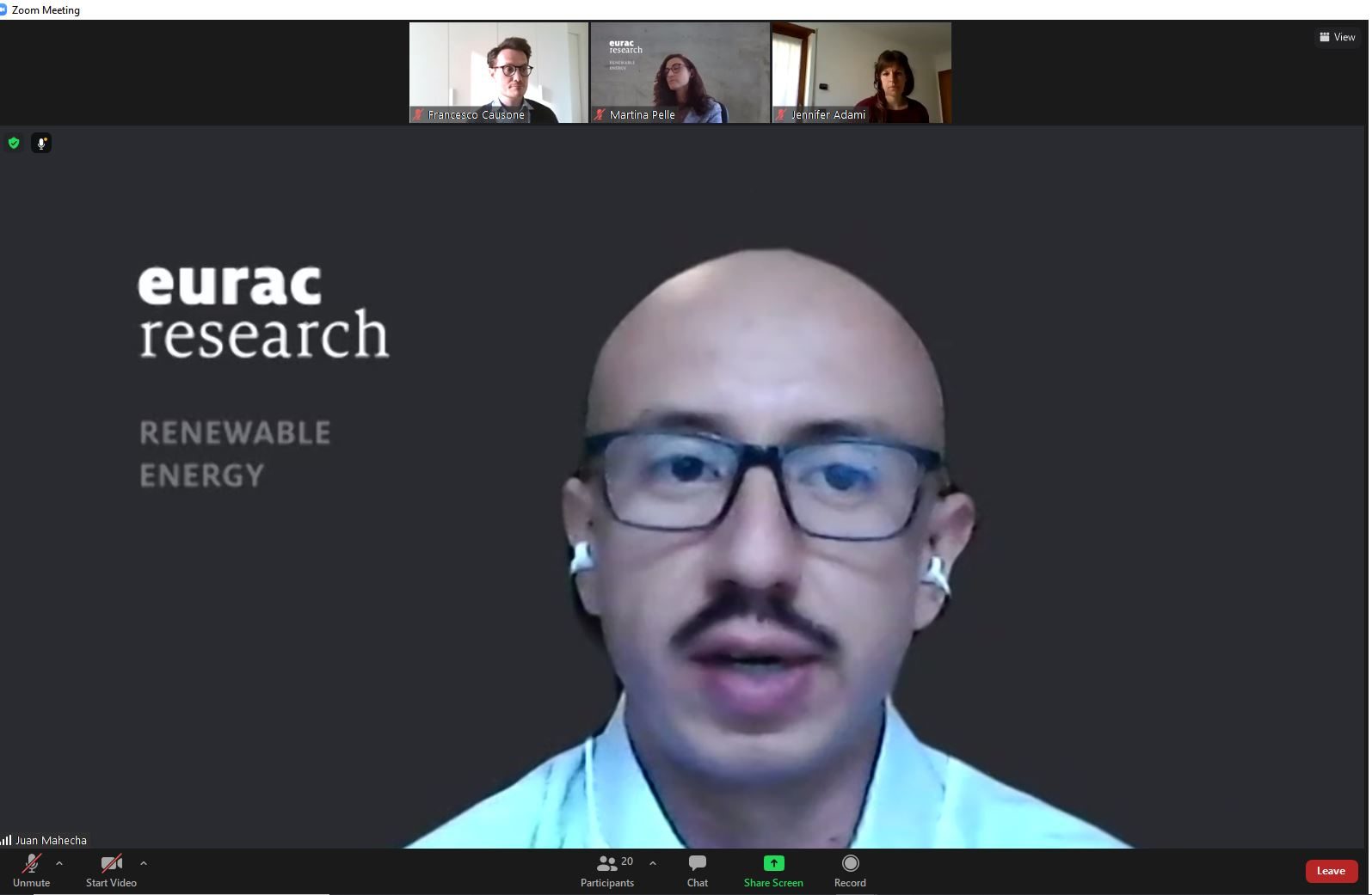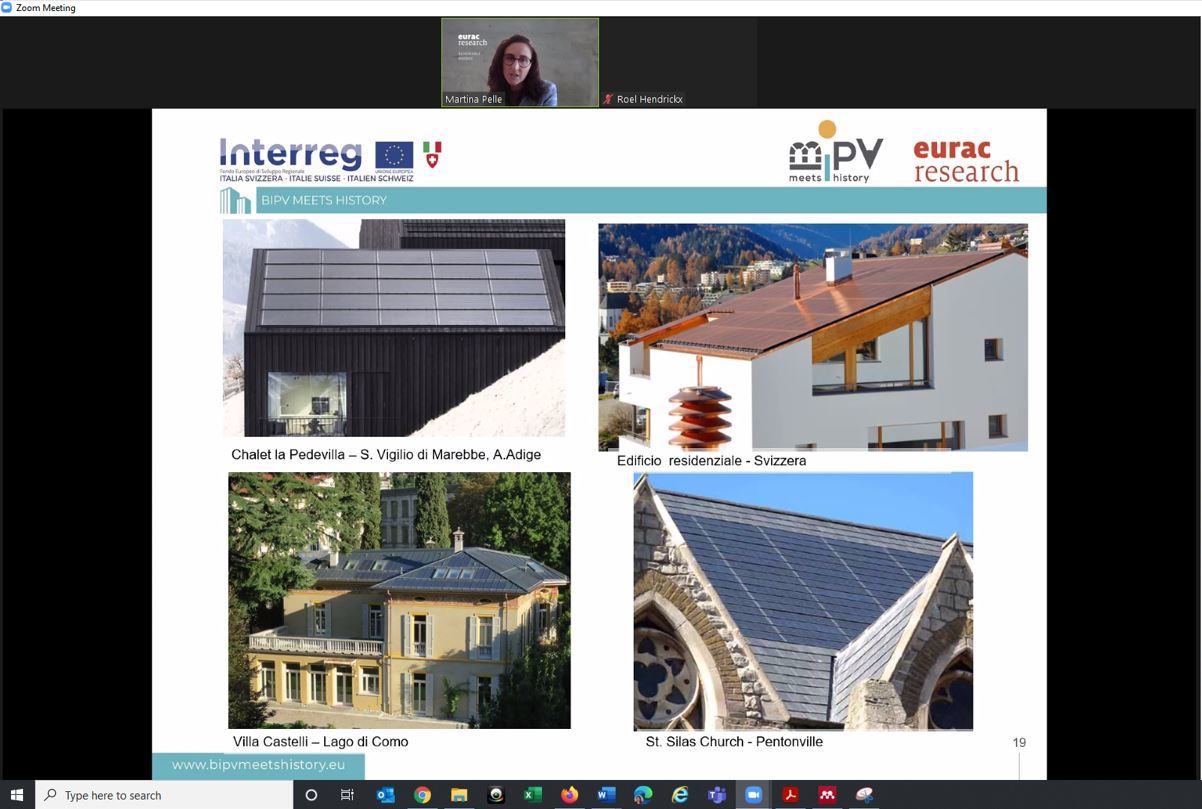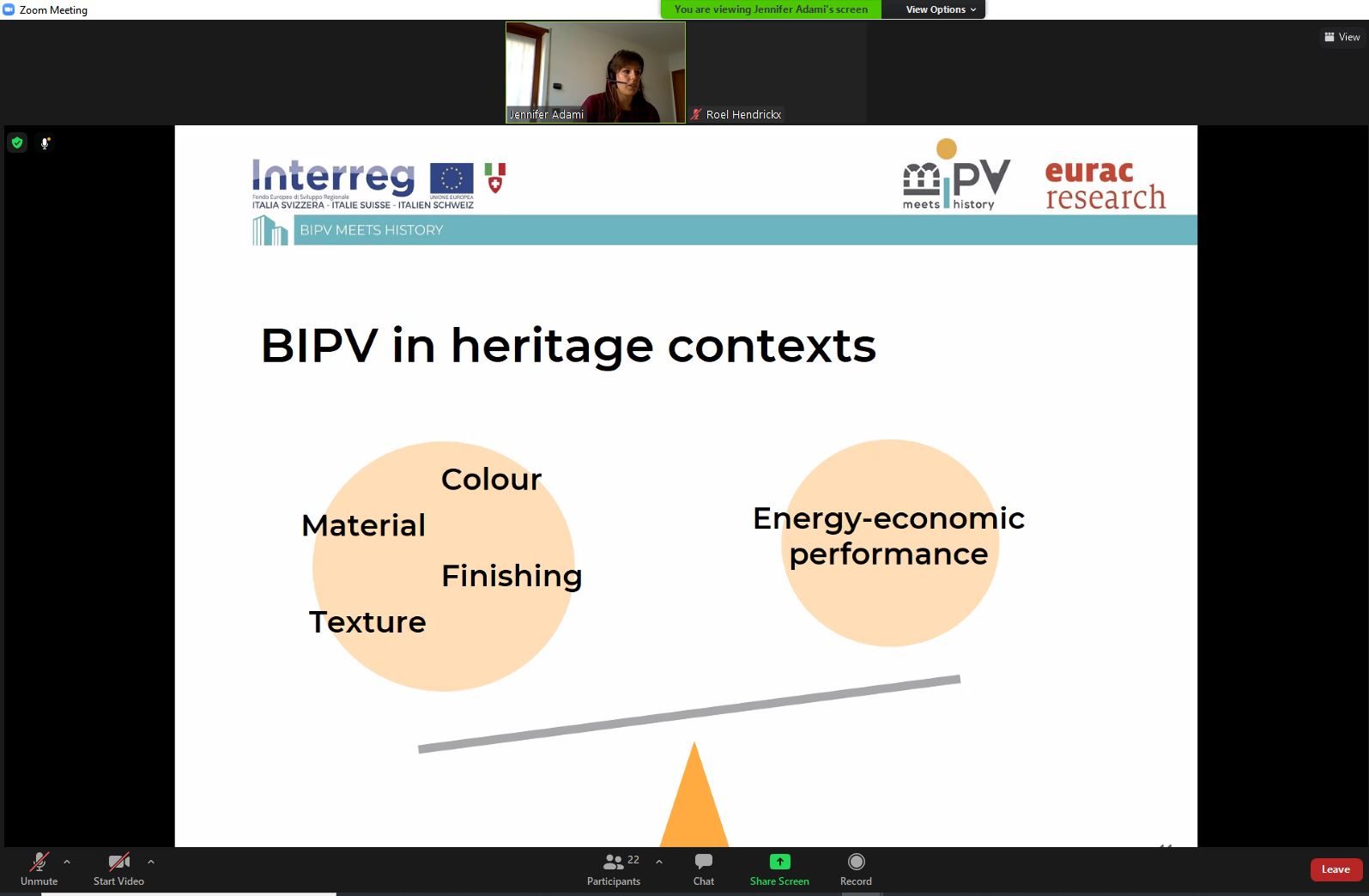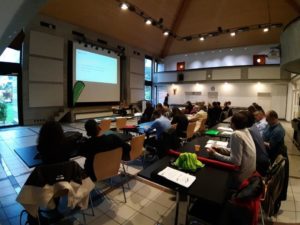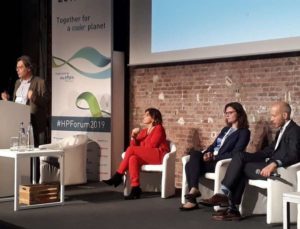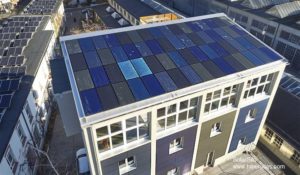ZOOM (ON-LINE)
BIPV (Building Integrated Photovoltaics) systems represent a technical solution to integrate RES (renewable energy sources) in buildings by using products that serve both as building envelope component and as power generation systems at the same time. PV integration in historic buildings and heritage contexts need to carefully balance both technical and aesthetic aspects.
In the frame of BIPV meets history project a workshop has been delivered within the international conference Sustainable Built Heritages – SBE21, held virtually from 14th and 16th of April 2021. By using an exemplary case study, the workshop aimed at highlighting the interdisciplinary activities and heterogeneous expertise required for the adequate introduction of BIPV technologies in heritage contexts. The workshop aimed at highlighting the multifunctional features of innovative BIPV products, presenting the technologies currently available on the market and the main criteria for their integration in architecture. Moreover, the workshop aimed at providing the main key element supporting an integrated design approach, which includes functional, aesthetical and energy aspects.
Starting from heritage classification and constraints detection, the workshop addressed the problem of electricity load profiles generation, proposing a methodology based on clustering population characteristics and specific building typologies. Then, it explored both barriers and potential for hidden coloured BIPV technologies, by providing a broad overview of the technologies currently available on the market, highlighting for each of them the main features from the functional, aesthetical and energy point of view. Finally, a methodology for fine-tuning consumption and potential production will be presented, performing techno-economical optimization for different design choices.
The workshop has been attended by 146 participants coming from 28 different countries. The theme of the integration of innovating PV technologies in heritages has elicited the interest of the public, who interact with the panellists by deepening some interesting topics, such as strategies for improving the accuracy of the electricity load demand profiles, the importance of taking into account the evolution of the use of the building in time in designing systems including renewable energy sources, life cycle assessment and recyclability of innovative PV products and their reliability.



